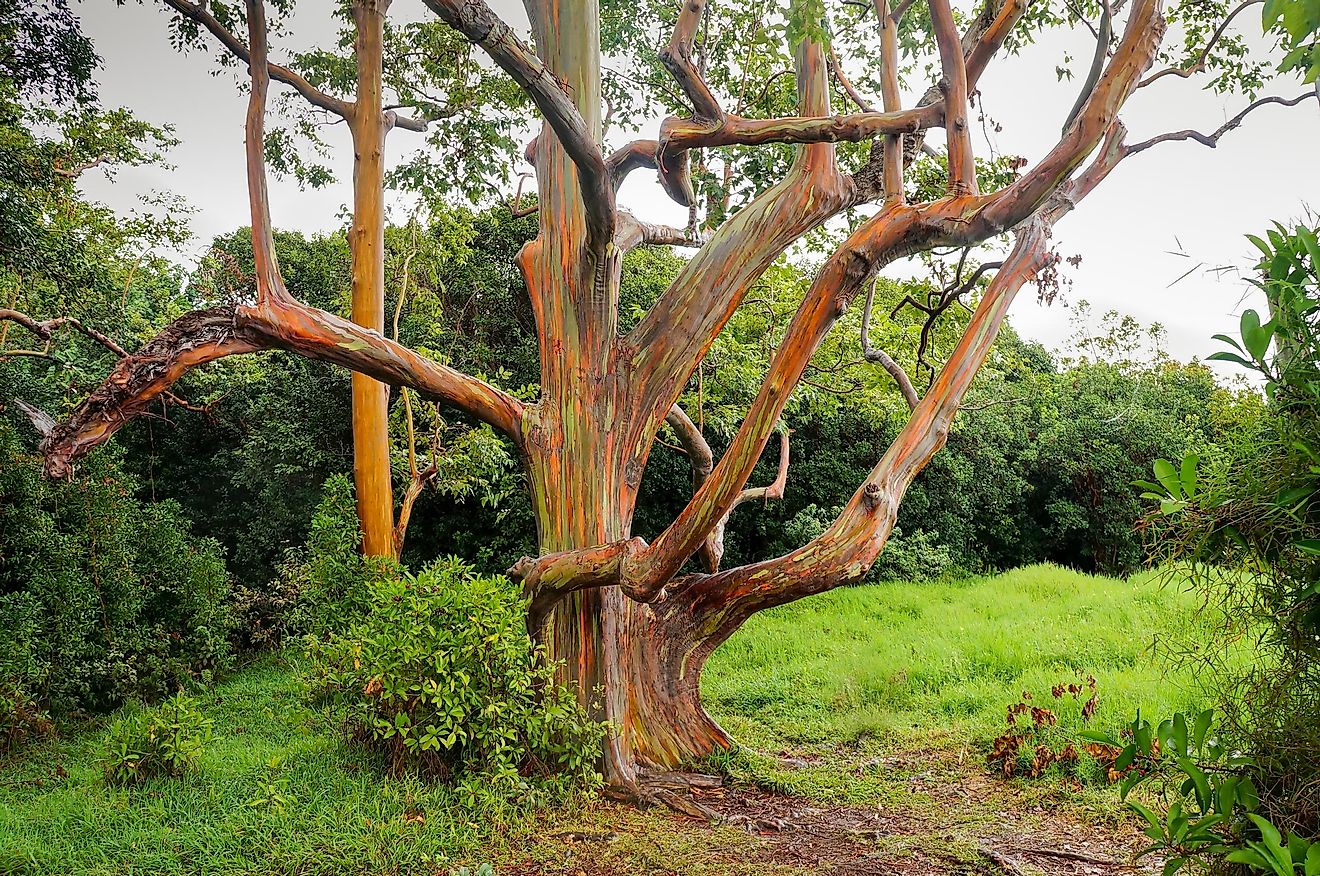Rainbow Eucalyptus: You Can Visit The Most Colorful Tree On Earth

- Rainbow Eucalyptus is considered an invasive species in many parts of the world.
- Rainbow Eucalyptus is one of the fastest growing trees in the world.
- Rainbow Eucalyptus is also known as Mindanao gum or rainbow gum.
It looks like something straight out of a Hollywood movie, a hand-painted prop by set designers to match some fantasy plot created by a screenwriter’s imagination. But these are real, actual trees that grow in forests in various countries across the globe. Rainbow Eucalyptus (Eucalyptus deglupta), also known as Mindanao gum or rainbow gum, belongs to the Eucalyptus genus of plants that includes flowering trees and shrubs in the myrtle family.
It is one of the fastest-growing evergreen trees in the world that can reach a height of up to 250 feet and a diameter of up to 6 feet, although outside tropical rainforests they are known to grow slower and can become a bit shorter than those in Asia. It has a life span of 50 to 150 years and is known as the only Eucalyptus tree that can be found growing in the Northern Hemisphere.
How Nature Makes a Rainbow Tree
What makes these trees intriguing is their colorful bark that looks like a color pencil that’s been sharpened. It starts off as a typical tree with a brown bark until the bark starts to shed in summer, and then the magic of nature happens. As it slowly sheds, it reveals a bright green inner bark that changes color as it ages. At some point, it turns purple, and then after some time it turns orange, and after it has been exposed to the air some more it turns a shade of maroon or blue.
The colorful streaks happen because parts of the bark don’t shed all at once, the entire bark doesn’t peel at the same time. Instead, it peels part by part, little by little, so others that have just recently started peeling would appear green, the rest could be orange or any other color of the rainbow (hence its name) depending on how long it has been exposed to the environment. Once this process of shedding is complete, it goes back to its original brown color until the next cycle. However, people have observed rainbow trees that grow in tropical climates have a brighter and much more colorful bark than those that grow elsewhere.
They are mainly cultivated for its wood used as construction lumber, particle boards, and plywood for making cabinets. As it is also a good source of pulp, some use the tree to produce paper although the product is pure white and not rainbow-colored. In recent years people have also been using these colorful trees as an ornament used mainly for landscape design to add color to an otherwise purely green scenery in the park, and home or botanical gardens.
Where to See Mother Nature’s Artwork
They thrive in moist and humid environments where sunlight and rainfall are abundant, deep within rainforests located in Mindanao in the Philippines, and also in the forests of Indonesia, Papua New Guinea and other areas in South East Asia. In recent years, some have spotted these gigantic wonders of nature in the US. People have been cultivating these trees in America and can now be seen in parts of the US with similar environments in their usual habitats in Asia. You can see a few growing in Hawaii, in other parts of Florida, Texas, and even California. Many who have shared photos of these trees online have found them in Waimea Valley and Na Aina Kai Botanical Gardens in Hawaii, in some parts of South Bay region in California, and in Mounts Botanical Garden in Florida,
The tree cannot survive hot and dry weather and are not resistant to frost so they can’t survive in cold climates.











